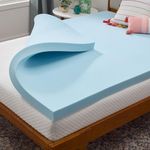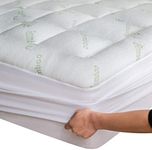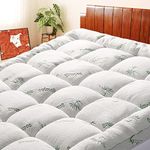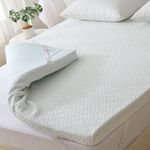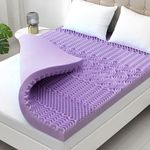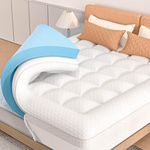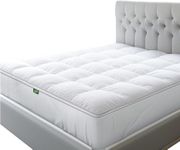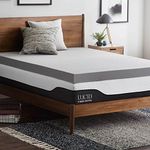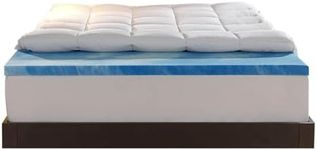Buying Guide for the Best Mattress Toppers For Back Pains
Choosing the right mattress topper can make a big difference if you suffer from back pain. A mattress topper is an extra layer that sits on top of your mattress to add comfort, support, or both. The right topper can help align your spine, relieve pressure points, and improve your sleep quality. When shopping for a mattress topper for back pain, it's important to focus on features that support your body and match your sleeping style. Understanding the key specifications will help you make a choice that best fits your needs.MaterialThe material of a mattress topper affects how it feels and supports your body. Common materials include memory foam, latex, and down alternatives. Memory foam is popular for back pain because it molds to your body and relieves pressure points, while latex is more responsive and offers a bit more bounce and breathability. Down alternatives are softer and less supportive, which may not be ideal for back pain. If you need more support and pressure relief, memory foam or latex are usually better choices. Consider your comfort preferences and any allergies when picking the material.
ThicknessThickness refers to how deep the topper is, usually measured in inches. Thicker toppers (around 3-4 inches) provide more cushioning and support, which can be helpful if your mattress is very firm or sagging. Thinner toppers (1-2 inches) add a slight comfort layer without changing the feel of your mattress too much. If you have significant back pain or your mattress is uncomfortable, a thicker topper may be best. If you just need a little extra softness, a thinner one might be enough.
FirmnessFirmness describes how soft or hard the topper feels. For back pain, a medium-firm topper is often recommended because it supports your spine while still offering comfort. Soft toppers may feel cozy but can let your body sink too much, which might worsen back pain. Extra-firm toppers provide strong support but may feel too hard for some people. Think about your usual sleeping position: back and stomach sleepers often need more firmness, while side sleepers may prefer a bit more softness for their shoulders and hips.
Pressure ReliefPressure relief is the topper’s ability to reduce stress on certain parts of your body, like your hips, shoulders, and lower back. Good pressure relief helps prevent pain and discomfort during the night. Memory foam and latex are known for their pressure-relieving qualities. If you wake up with sore spots or pain, look for a topper that specifically mentions pressure relief in its description.
Motion IsolationMotion isolation means how well the topper absorbs movement, so you’re less likely to feel your partner moving during the night. This is especially important if you share your bed and are a light sleeper. Memory foam is excellent at motion isolation, while latex and down alternatives may transfer more movement. If you’re easily disturbed by movement, prioritize a topper with good motion isolation.
BreathabilityBreathability refers to how well the topper allows air to flow, which affects how hot or cool you feel during the night. Some materials, like traditional memory foam, can trap heat, while latex and gel-infused foams are usually cooler. If you tend to sleep hot, look for a topper with cooling features or made from breathable materials.
